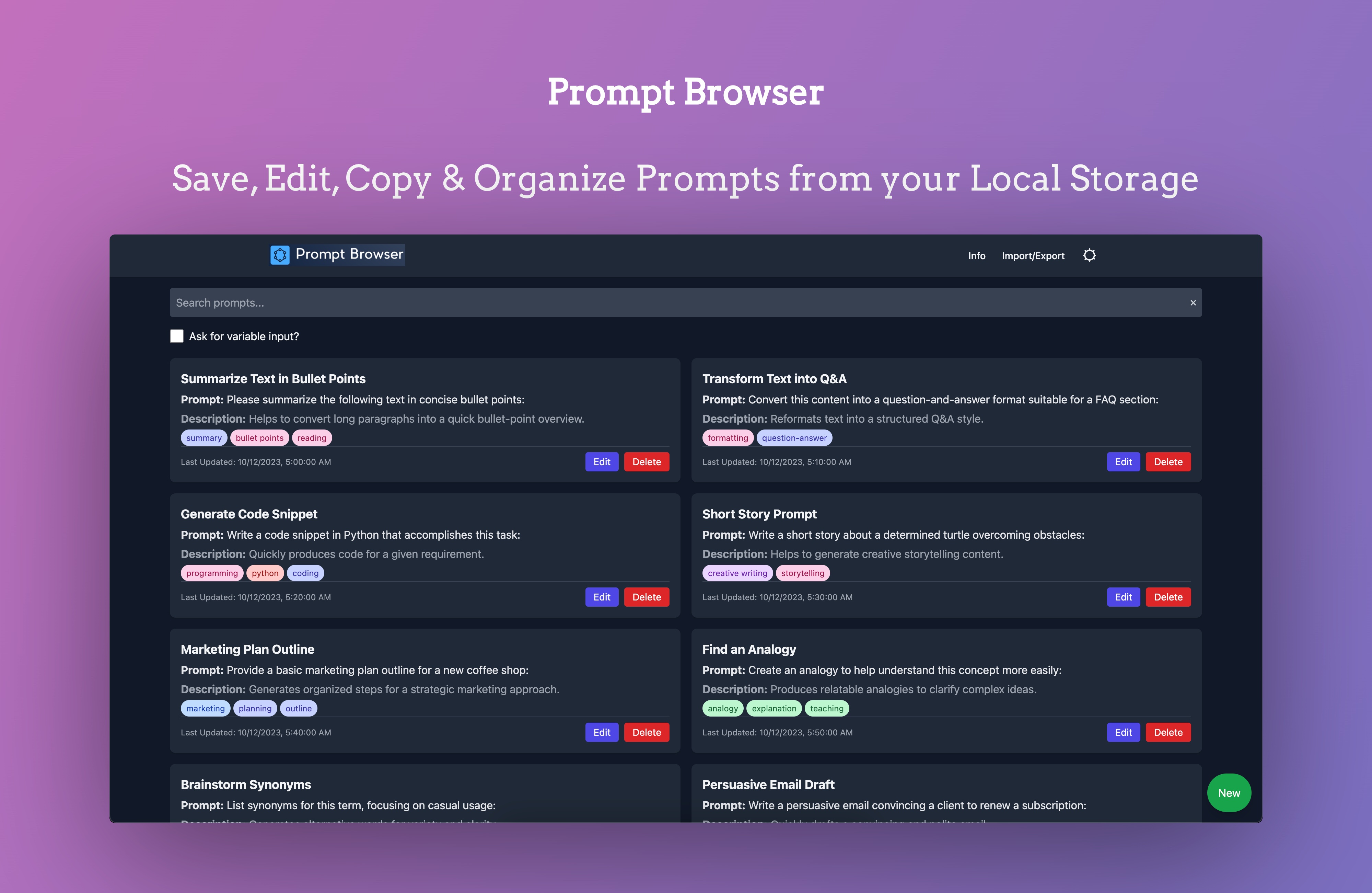
Overview
Prompt Browser is a lightweight, resource-friendly application built to help users create, edit, and organize AI prompts directly in their browser’s local storage. It leverages Tailwind CSS for styling, minimal JavaScript logic for interactivity, and Nginx for static file serving. The entire app is bundled in a small Docker image, ensuring easy deployment and minimal overhead.
Live Demo
- Check out the PromptBrowser live.
Goals and Approach
Simplicity & Efficiency:
Designed with a focus on local data storage, Prompt Browser avoids complex back-end infrastructures, reducing resource usage and maintenance.Fast & Minimal Setup:
Deployed via a lightweight Docker container based on an Alpine Linux image running Nginx. This ensures a small footprint and quick startup times.Straightforward User Experience:
Users can organize prompts within their browser, add/edit/delete entries, and easily copy prompts. No account or external service is needed—everything stays local.
Tech Stack Details
- Static HTML, JavaScript, Tailwind CSS:
Keeping the front end simple and maintaining an ultra-fast load time. - Nginx (Dockerized):
Serves static content, providing an efficient environment. - Alpine Linux Base:
Ensures minimal image size and resource usage.
Running Prompt Browser
A pre-built Docker image is hosted at sharfy9/PromptBrowser:latest.
Docker Run
Visit http://localhost:8080 to access the app.
Docker Compose
Run with:
| |
Once running, open http://localhost:8080.
Key Functionalities
- Local Storage Management: All prompt data is saved within the browser, eliminating reliance on external databases or APIs.
- User-Friendly Editing & Copying: Users can add and edit prompts with a clean UI, then copy them quickly.
- Minimal Design & Deployment: A single Docker container hosts the entire app, simplifying installation and updates.
Conclusion
Prompt Browser showcases how a simple, static web project can provide efficient AI prompt management without a heavy back-end or complicated infrastructure. Its lightweight nature, combined with a minimal Docker footprint, exemplifies a clean approach to solving a common organizational challenge in AI prompt workflows.
